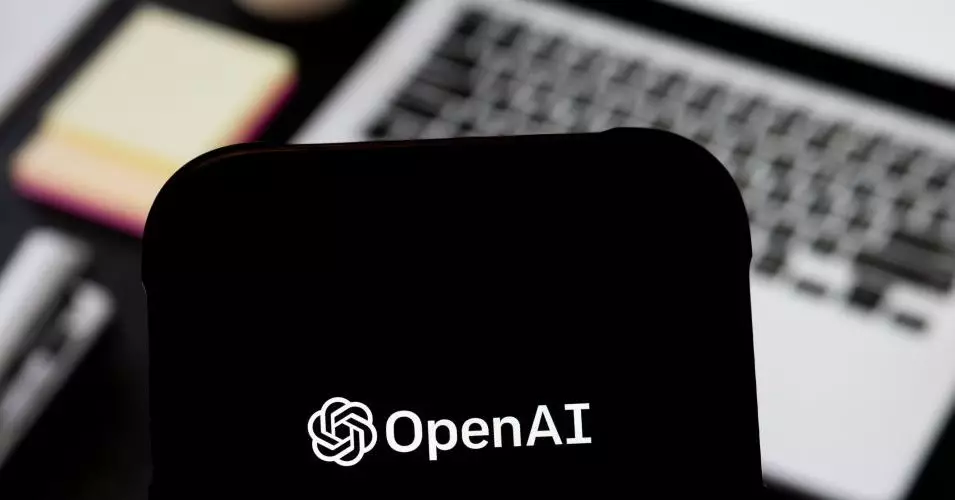In a significant development for the artificial intelligence landscape, Sam Altman, CEO of OpenAI, recently announced the upcoming release of an open-weight language model. This declaration marks a pivotal shift, responding not only to the competitive pressures from international players like DeepSeek but also to the rising trend of open-source AI models within the tech community. The revelation emphasizes OpenAI’s recognition that surviving in this ever-evolving AI ecosystem requires adaptability, transparency, and an understanding of the public’s demand for accessible technology.
While Altman had previously branded OpenAI’s stance as potentially “on the wrong side of history,” his latest comments suggest that the organization is recalibrating its approach. This shift is timely, as the AI landscape increasingly favors models that can be freely downloaded, modified, and integrated by developers. OpenAI’s forthcoming model promises to empower users while maintaining the robust capabilities that the company is known for.
Competitive Tensions and Open Weights
The emergence of competitive threats like DeepSeek’s R1 model has undoubtedly pressured OpenAI to reconsider its strategies. Notably, DeepSeek’s model gained substantial traction after its release earlier this year, prompting discussions about the operational costs associated with training and deploying AI models. OpenAI’s admission that it has been contemplating an open-weight model reveals a desire to match or exceed the affordability and accessibility qualities that have become the hallmark of competitors in the field.
Industry voices are responding favorably to Altman’s announcement. Clement Delangue, cofounder of Hugging Face, underscores the significance of open-weight models as a democratizing force in AI development. “With DeepSeek, everyone’s realizing the power of open weights,” Delangue noted, illustrating a growing consensus about the advantages of transparency and community-driven innovation. As OpenAI leans into this approach, it may redefine the contours of AI citizenship, where developers are not just consumers but contributors to the technology’s evolution.
Responsibilities and Risks of Open Models
As OpenAI ventures into the realm of open models, it faces the dual obligation of meeting user expectations for functionality while safeguarding against potential misuse. Concerns regarding how unrestricted models could be exploited for nefarious purposes are not unfounded. The potential for sophisticated cyberattacks or even the creation of hazardous biological materials poses ethical dilemmas that AI developers must navigate carefully.
Steven Heidel, a technical staff member at OpenAI, responded to Altman’s announcement by assuring the public that running this new model on personal hardware will be viable. This accessibility raises deeper questions about the extent of OpenAI’s responsibility not merely for advancing AI technology but for ensuring its safe and ethical use. Johannes Heidecke, an AI safety researcher, emphasized that while embracing open models introduces challenges, OpenAI adheres to its Preparedness Framework, pledging to refrain from releasing models viewed as posing catastrophic risks. This commitment is essential to maintaining trust among users, developers, and the broader society.
Developer Engagement and Community Building
Coinciding with the forthcoming release is OpenAI’s proactive move to engage developers, inviting them to apply for early access to the new model. Altman hinted at events designed to facilitate hands-on experiences with the initial prototypes, fostering a collaborative atmosphere where user feedback can be integrated into improvements. This approach not only underscores OpenAI’s commitment to user-informed innovation but also helps nurture a vibrant community around its technologies.
Moreover, OpenAI’s efforts to cultivate relationships with developers align with a broader trend in the tech industry where user engagement is seen as a cornerstone for successful product development. By being open to dialogue and input, OpenAI can continue refining its models to better serve diverse applications, thereby reinforcing its position as a leader in responsible AI development.
Ultimately, OpenAI’s decision to release an open-weight model is a bold and necessary step in redefining what contemporary artificial intelligence can and should be. By embracing transparency and community involvement amid the intricacies of competitive pressures and ethical considerations, OpenAI not only reaffirms its mission but also sets a new standard for what is possible in the AI domain. As we await the arrival of this groundbreaking model, the implications for developers, businesses, and society as a whole promise to be far-reaching and transformative.


Leave a Reply